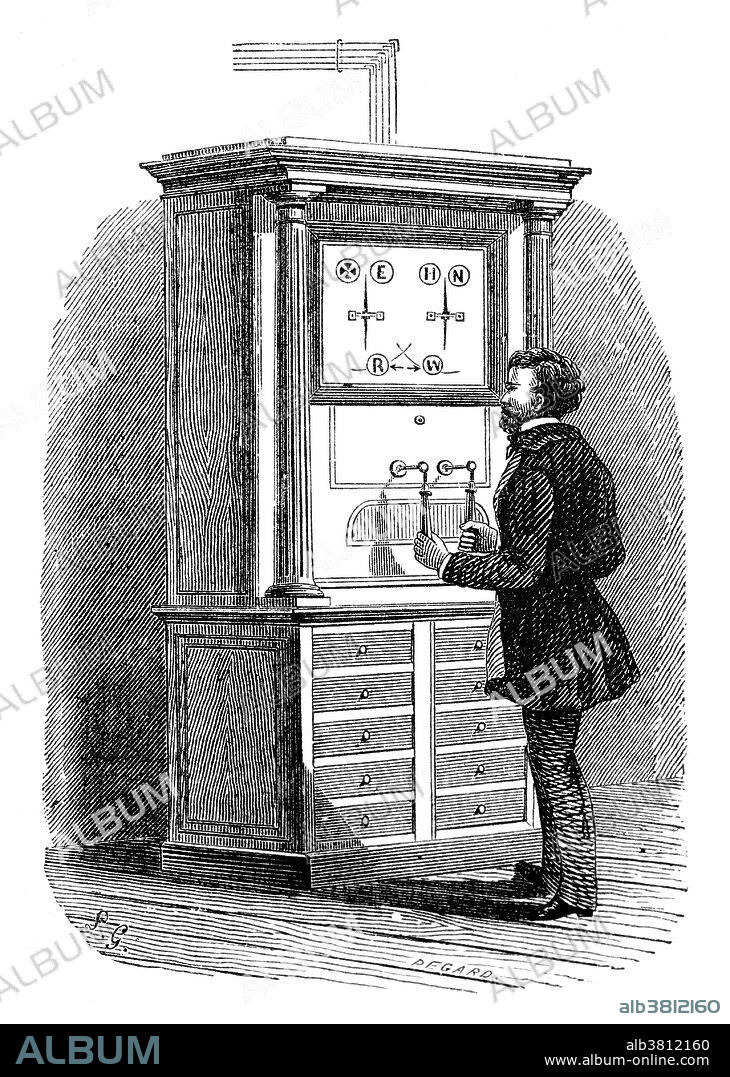alb3812160
Cooke and Wheatstone Two Needle Telegraph, 1830s

|
Ajouter à une autre Lightbox |
|
Ajouter à une autre Lightbox |



Avez-vous déjà un compte? S'identifier
Vous n'avez pas de compte ? S'inscrire
Acheter cette image

Titre:
Cooke and Wheatstone Two Needle Telegraph, 1830s
Légende:
Voir la traduction automatique
The Cooke and Wheatstone telegraph was an early electrical telegraph system invented by English inventors William Fothergill Cooke and Charles Wheatstone. The receiver consisted of a number of needles which could be moved by electromagnetic coils to point to letters on a board. This feature was liked by early users who were unwilling to learn codes, and employers who did not want to invest in staff training. The two-needle telegraph required three wires, one for each needle and a common return. The coding was somewhat different from the five-needle telegraph and needed to be learned, rather than read from a display. The needles could move to the left or right either one, two, or three times in quick succession, or a single time in both directions in quick succession. Either needle, or both together, could be moved. This gave a total of 24 codes, one of which was taken up by the stop code. Three letters were omitted: J, Q and Z, which were substituted
Personnalités:
Crédit:
Album / Science Source
Autorisations:
Modèle: Non - Propriété: Non
Questions sur les droits?
Questions sur les droits?
Taille de l'image:
3100 x 4350 px | 38.6 MB
Taille d'impression:
26.2 x 36.8 cm | 10.3 x 14.5 in (300 dpi)
Mots clés:
AIGUILLE • CÉLÈBRE • CELEBRITE • CHARLES • COMMUNICATION • DEUX • ELECTRICITE • EUROPÉEN • ILLUSTRATION • MASS • PHYSIQUE ELECTRICITE • TECHNOLOGIE • XIXE SIÈCLE
 Pinterest
Pinterest Twitter
Twitter Facebook
Facebook Copier le lien
Copier le lien Email
Email
